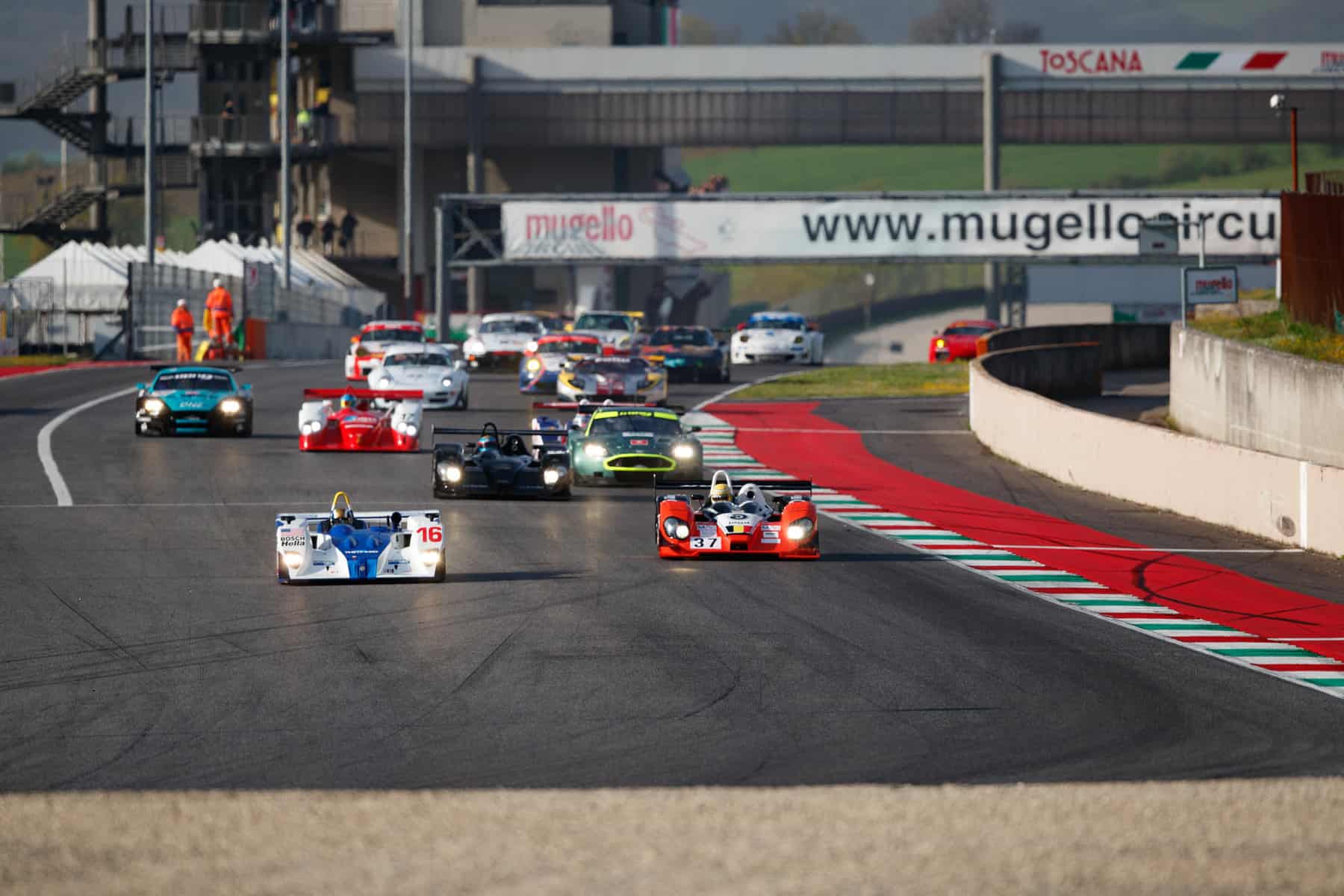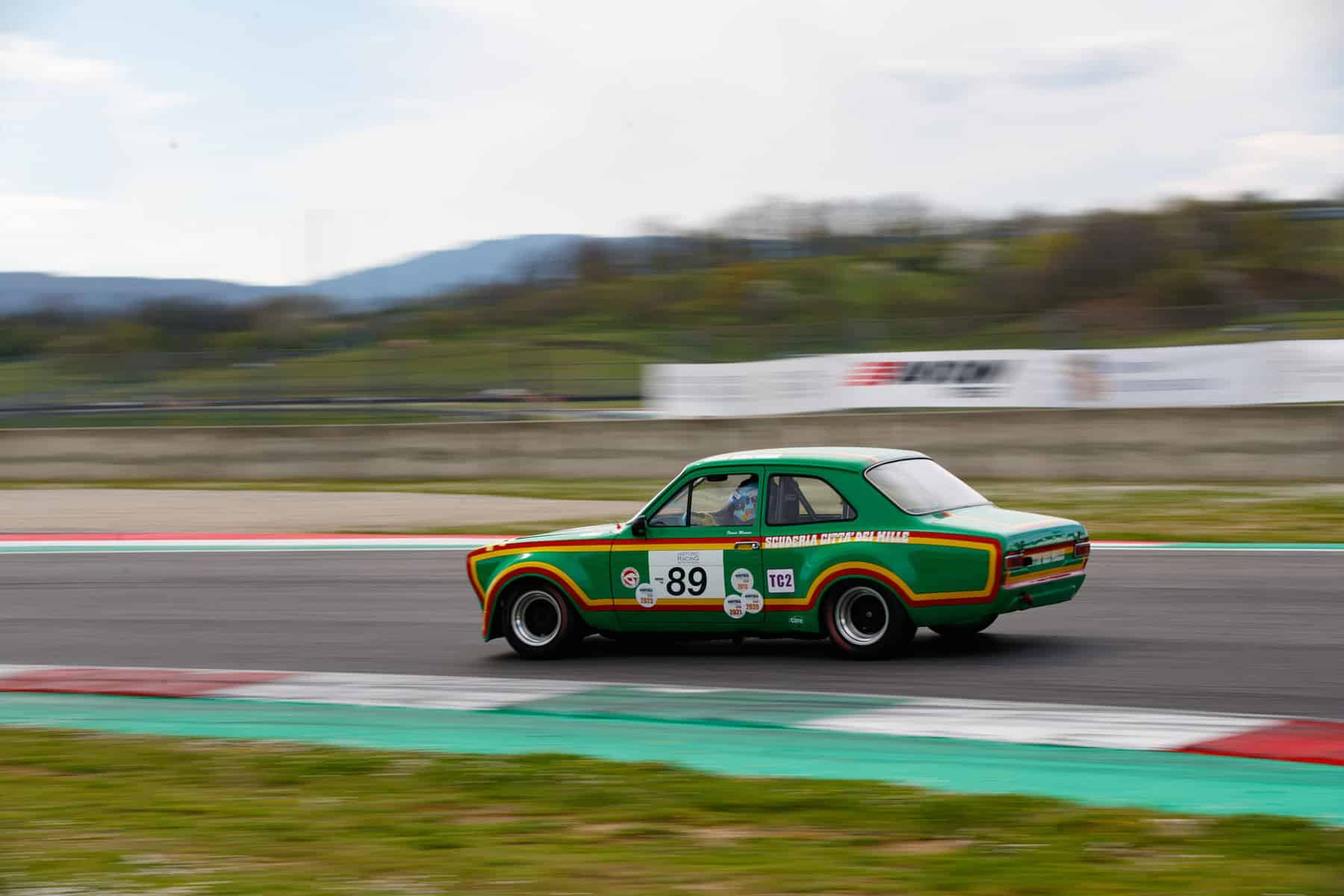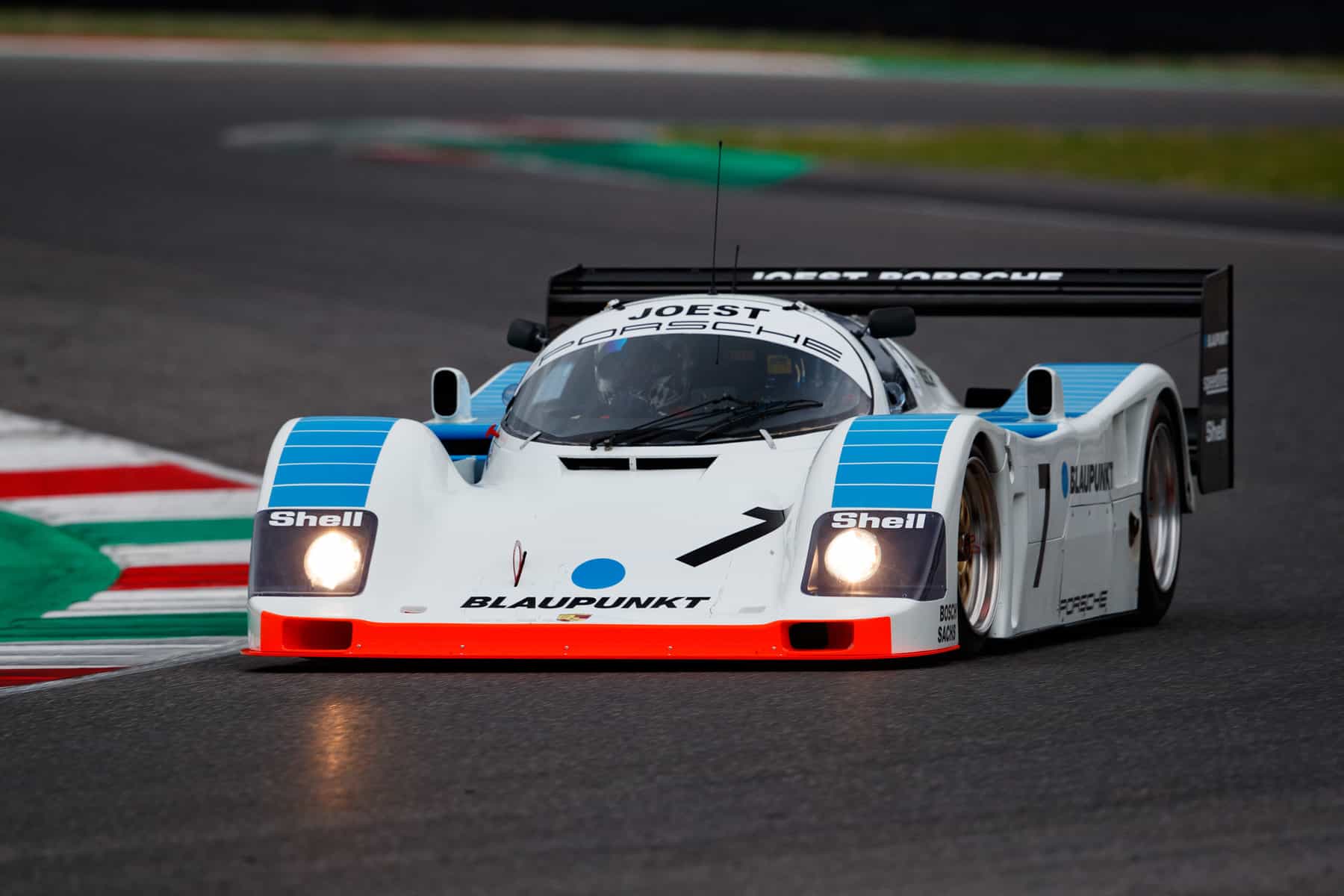
Mugello Classic Recap
Proper weather for opening of racing season in Europe
WORDS & IMAGES BY: WOUTER MELISSEN
For the second consecutive year, the 2023 European historic racing season started with the Mugello Classic. Part of the Historic Racing by Peter Auto series, the event included all nine of the grids for sports prototypes, grand tourers, and touring cars from the early 1950s through to the late 2000s.
The Autodromo Internazionale del Mugello is a great venue to start the year as it is a lovely track and its scenic location in the Tuscan hills in Florence promises an early spring. That was certainly not the case in 2022 when the participants had to endure rain and even snow. The drivers of the 280 competition cars that lined up for the 2023 edition were indeed treated to proper spring weather with plenty of sunshine.
It was a relentless weekend at Mugello with three days of virtually non-stop action from nine o’clock on Friday morning through to Sunday evening. This is to accommodate the considerable track-time allocated to each of the nine grids with the shortest session spanning 35 minutes and the longest race two hours. In addition to the eight races dedicated to sports prototypes and GTs, the line-up also included the Heritage Touring Cup for the touring cars of the late 1960s through to the early 1980s. While there were many familiar faces in the paddock and well-known cars entered, there were some that stood out. We have highlighted five that caught our attention.
Porsche 935 M16
One of the most prolific and successful Porsche competition cars is the 935. Not only did the factory produce half a dozen distinct versions, many customer teams created their own iterations. In the past we have taken a detailed look at the Dick Barbour Racing ‘Old Warhorse’ 935 and one of the 935 K3s raced by the Whittington Brothers. Another great story is attached to the Porsche 935 raced in the Classic Endurance Racing 2 (CER2) at Mugello by Emanuel Brigand.
In 1977, American racer Ron Brown acquired a Porsche 934/5. This was an interim model based on the Group 4 category Porsche 934 designed specifically for North America. Fearing total domination, the American governing bodies had been reluctant to allow the more extreme 935 to race during the 1977 season. Brown raced the car three times before selling it on to Clif Kearns and his Desperado Racing team. The rules were changed for 1978, allowing Kearns to have his car updated to 935 specifications with larger wheel arches, a ‘slant nose’ and rear wing.
Kearns raced the car throughout the season until he crashed the car at the Daytona Finale Races. The damaged car was sent to Kevin Jeannette. Instead of repairing damage to the front-end, he used a road car chassis to effectively build a brand-new car with the latest 935 specifications. Appropriately it even received a chassis number unlike that of any other 935; DMV 470 12CA. It was then raced by Kearns and later Marty Hinze for many more years. Its final outing came at Sebring in 1986. In later years, without the time constraints of a racing season, the damaged car was repaired by Jeannette and restored to its original 934/5 guise.
When Brigand acquired the 935 with chassis DMV 470 12CA, it was in the Swap Shop livery used by Hinze Racing during the 1982 and 1983 season. Over the winter, it was restored to livery used a year earlier when Hinze, Milt Minter and Bill Whittington finished third overall in the Sebring 12 Hours. Sadly, Brigand did not make it to the finish at Mugello with this unique 935.
Ford Escort RS 1600
The Heritage Touring Cup (HTC) is very much a classic Ford vs BMW affair with Capris and Escorts taking on 3.0 CSLs and 635 CSIs respectively. With the cars based on regular production cars and the close nature of touring car racing, relatively few original cars of the 1970s have survived. For the same reasons, it has become common practice to take a road-going Capri, Escort or CSL and convert them to Group 2 specifications for historic racing.
One rare exception is the Ford Escort RS 1600 fielded by Italian historic racer Franco Meiners. It was one of two cars built by specialists Broadspeed in the United Kingdom for Aldo Valtellina. Like Meiners, the very wealthy Valtellina came from Bergamo and was encouraged by Arturo Merzario to buy the cars to compete in the Italian Touring Car Championship. Merzario was also racing for Alfa Romeo / Autodelta with the Tipo 33 prototype in the World Championship and used this connection to get ex-Autodelta engineer Giuseppe Maccario to tune the cars. Painted bright green, the Escort now raced by Meiners was driven to the Italian championship by Merzario in 1974, 1975 and 1976.
Not only is the ex-Valtellina Racing Escort historically significant, it also proved very fast at Mugello. During qualifying, Meiners was the quickest of all Escorts and eighth overall behind the much larger-engined Capris and CSLs. The one-hour race proved quite an adventure as Meiners explains: “The car was very fast but the driver not so lucky.” He had to pit early in the race after one of the latches on the engine cover had failed: “with vibration it got loose, very strange.” With the engine cover taped down, Meiners proved quicker still than in qualifying, but it did not last: “I ended my race in the gravel after the front wheel broke.”
Joest Racing Porsche 962C
Another broadly used, very successful and often modified Porsche racing car was the 962 that competed in the Group C and IMSA GTP categories during the 1980s and 1990s. During this era, the Porsche works team dominated but was sometimes challenged by privateers Joest Racing. Back-to-back Le Mans winners in 1984 and 1985 with a slightly earlier 956, Joest Racing became very closely associated with Porsche. More recently, the German team ran the hugely successful Audi sports car racing effort with Ralf Juttner at the helm.
Joest Racing was back in the paddock at Mugello, running a 962C for customer Yvan Vercoutere and his blisteringly quick co-driver Ralf Kelleners. Among the men working on the car was none other than Ralf Juttner himself, wearing a period correct Joest Porsche jacket. He explained that he was more than happy to come out of retirement and get back out to a racetrack to look after the 962C.
The 962C in question was one of the very last built and underlining the status of Joest Racing, it had been given the works chassis number 962-013. Although never raced by Porsche, the car was fitted with a twin-tier rear wing developed at the factory by Norbert Singer. The lower element effectively extended the ground-effect tunnels, generating additional downforce without adding drag. There were many more detail changes that made the ten-year old 956/962 faster than it ever was but ultimately no races were won in period with this configuration. Chassis 962-013 was only raced at Le Mans in 1993 with a more conventional long tail.
While Yvan Vercourtere is an accomplished gentleman racer, it is always a pleasure to watch Ralf Kelleners in a Porsche 962C. He once again showed off his craft, recording the fastest lap of the two 45-minute races in this 962C. Sadly, teething issues meant that the car did not feature at the sharp end of the field by the end of the race.
Chevrolet Corvette C6.R GT2
One of the newest cars on track at Mugello was the Chevrolet Corvette C6.R GT2 fielded by John Emberson and Nigel Greensall in the Endurance Racing Legends (ERL). Introduced in 2009, this was the third Corvette GT racer produced for Corvette Racing by Pratt & Miller. After two GT1 cars, this was the first one built to meet the GT2 regulations, allowing the Corvette to go head-to-head with the Porsche 911 and Ferrari F430.
The example raced at the Mugello Classic was the very first one built, which debuted halfway through the 2009 ALMS season at Mid Ohio. Having served the works team for the better part of two seasons, chassis 001 was sold to the French Larbre Competition team. In the hands of Patrick Bornhauser, Julien Canal and Gabriele Gardel it was then raced to a GTE AM class win at the 24 Hours of Le Mans in 2011. Still in Larbre colors, it was acquired by the current owner recently.
With the cut-off for the ERL set in 2010, it was decided to restore the car to its 2009 Corvette Racing configuration by re-fitting a sequential instead of a paddle shift gearbox over the winter. The final decals were applied by Foxcraft Racing to the car just a few days before the car was shipped to Italy. “Everyone on the Foxcraft team was very excited to race the C6.R for the first time at Mugello after the winter preparation and training with Larbre and Pratt & Miller engineers on what has proved to be a quite complex car to run,” Emberson explains.
“It is a privilege to own a proper works race car and for the driver it is fantastic to visualize yourself as Jan Magnussen at Laguna Seca in 2009 or imagine the car’s four visits to Le Mans. However, you are quickly reminded that you do not have the same talent by a visit to the gravel trap in qualifying!” Emberson continues: “We drove quite conservatively in the ERL races to gain experience and very much look forward to Spa in May.”
Lotus Elan 26R
The single largest field of the weekend is for the two-hour Sixties’ Endurance race. As the name suggests, it is dedicated to GT cars and sports prototypes of the 1960s; the first half of the decade to be more precise. Those chasing outright victories are best off in an AC Shelby Cobra or Jaguar E-Type but further down the order there are other interesting cars competing. Among them is the Lotus Elan 26R driven by Simon Evans and James Littlejohn.
Acquired new by the works supported Ian Walker Racing team in the summer of 1965, it was one of an estimated 97 Elans built to 26R specification. The competition preparation included lighter, fixed headlights, flared wheel-arches, beefed up suspension, knock-off wheels and a very well-honed twin-cam engine. Sold as complete cars or upgrade kits, the Elan 26R was hugely successful in period with privateer teams like Ian Walker Racing and John Willment Racing.
One very few genuine 26Rs racing today, the Evans and Littlejohn car has been a set fixture in the Sixties’ Endurance races. “It is a lot of fun being in a small, nimble car amongst the bigger and more powerful Cobras and E-Types.” Evans explains: “The Elan laps differently so whilst it loses out on the straights it carries more speed through the corners.”
“We had an eventful race; the valve on the front right tire failed early in the race, resulting in the tire decompressing on the brakes into the first corner.” Evans continues: “I limped back to the pits where the team changed the tire very quickly but we picked up a two minute penalty for taking the short route back. James jumped in later and managed to make up his extra 50 seconds pro-driver stationary time in the pits as well as put us sufficiently far ahead of the next Elan that we ended up P1 in class even after the two minutes were added.”
The 2023 Historic Racing by Peter Auto season will continue in May with the Spa Classic, where many of the same cars will be back in action.









